Make Low FODMAP Tuna Poke At Home
It only very recently made tuna poke (POH-kay) at home for the very first time. And once I made it, all I could think of was, why had I waited so long? Poke is basically like a ceviche in that it is raw fish that has been flavored with all kinds of tasty ingredients in a marinade.
It is usually served with rice to make it heartier, but it is still a very fresh, light dish. This Low FODMAP Tuna Poke is quick and easy and yet elegant enough for guests – whether they are following the low FODMAP diet or not! People will ask for the recipe.
Buying “Sushi Grade” Tuna
Since poke is all about raw fish, you do need to take care while shopping and buy sushi grade tuna. Look for those actual words – “sushi grade” – AND certainly talk with your fishmonger.
This is because the term “sushi grade” is actually not regulated, however, it is a good place to begin a discussion. There is no national governing body that grades fish in the same way that the US Department of Agriculture (USDA) grades beef.
The Food and Drug Administration (FDA) does issue advisory guidelines that describe best practices for handling fish intended for raw consumption, but these guidelines do not govern quality, just safety.
Safety First
Raw fish can harbor parasites – everything from tapeworms to roundworms, for example. So how can you make sure that your fish is free of parasites? You might not be able to, so the experts suggest that you either cook your fish thoroughly or, if you are making poke (or sashimi), buy properly frozen fish.
Temperature Is a Cure
That’s right. The very “fresh” fish that we suggest you use has been frozen. And not just frozen like the Popsicles in your home freezer. Some fish is flash frozen right on the boat soon after the catch is hauled aboard. This approach also preserves nutrition.
Some of the freezers that sushi grade fish is held within are between around -31°F/-35°C to -60°F/-52°C. This is VERY cold. Held at this temperature for a period of time will kill any parasites, allowing you safe eating without cooking.
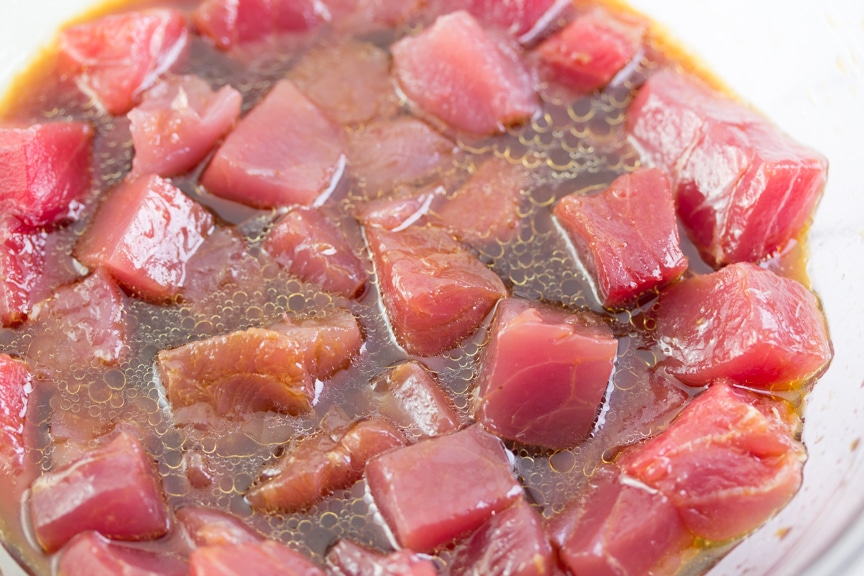
Don’t Panic But Be Prudent
Serious Eats has a very comprehensive article on the topic of “safe” raw fish eating and I encourage you to read it. It lays out the facts (some sound scary) and also explains how you might make a decision as to whether eating raw fish is prudent for you.
Many experts quoted in the article think it is worth it and they eat this kind of fish themselves.
That said, they are not addressing people with GI issues. I eat poke, ceviche and sashimi. I have never gotten sick from doing so. You have to make your own decision and perhaps discuss eating raw fish with your Registered Dietitian.
Armchair Travel
Once you are ready to make this Low FODMAP Tuna Poke it will come together quite quickly. And, if you are a poke fan, be sure to read our intrepid Success Team member Vanessa Vargas’s Hawaiian travelogue; she enjoys poke whenever she travels to the islands (and she has IBS, just like you and me).
Note that the amount of avocado called for is very specific. If divided into 4 servings, as is suggested, this is a low FODMAP 30 g amount of avocado.
Also please note that mirin has not been lab tested for FODMAPs. You can use it if you know you tolerate it well, otherwise use white wine.
We think you might also like our Low FODMAP Sesame Crusted Ahi Tuna. Check it out.
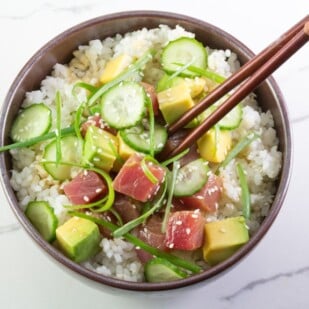
Low FODMAP Tuna Poke
Tuna poke is easy to make at home - make sure to read about how to buy the best quality fish.
Ingredients:
- 2 cups (400 g) short-grain sushi rice
- 2 cups (480 ml) plus 2 tablespoons water, divided
- Kosher salt
- ¼ cup (60 ml) rice vinegar
- 1 Persian cucumber, about 6-inches/15 cm long, trimmed, scrubbed and thinly sliced crosswise
- A few slices of fresh jalapeno optional
- 2 tablespoons lime juice
- 2 tablespoons white wine or mirin
- 2 tablespoons orange juice
- 2 tablespoons low-sodium soy sauce
- 4 ¼ ounces (120 g) firm, ripe avocado flesh, cut into cubes
- 1 pound (455 g) high-quality raw tuna, cut into ½-inch (12 mm) pieces
- 2 scallions, green parts only, cut into thin slivers (see image)
- 2 teaspoons sesame seeds
Preparation:
-
Place rice in a mesh strainer and rinse under cool water until water runs clear. Combine rice and 2 cups (480 ml) water in a medium-sized saucepan, add a large pinch of salt, cover and bring to a boil. Adjust heat and simmer until rice is tender, about 20 minutes. Remove from heat, still covered and and let sit 10 minutes. Fluff with a fork and keep warm.
-
While rice is cooking, w together the vinegar, 2 tablespoons reserved water and about 1 tablespoon salt in a non-reactive bowl until salt dissolves. Add the cucumber slices and jalapeno, if using, and stir them in to coat well. Allow to sit at least 10 minutes. These quick pickles can sit for a few hours.
-
In another non-reactive bowl large enough to hold the tuna, whisk together the lime juice, mirin, orange juice and soy sauce. Add the tuna and toss to coat. Allow to sit for a maximum of 10 minutes.
-
Right before serving, scoop rice into bowls, top with tuna, then garnish with drained cucumber pickles, scallions and sesame seeds.
Notes:
Tips
- Poke is not a dish that stores well. Plan ahead and make it the day you want to serve it.
FODMAP Information
Our recipes are based on Monash University and FODMAP Friendly science.
- Avocados: Both Monash University and FODMAP Friendly have lab tested avocados, and their results vary from one another. Monash recommends a Green Light low FODMAP serving size as 30 g. FODMAP Friendly gives them a “Pass” at 120 g. PLEASE read our article, Is Avocado Low FODMAP? In the article we address the fact that both Monash University and FODMAP Friendly use very misleading wording in their entries. Monash says 30 g is “1/8th an avocado” and FODMAP Friendly says “½ medium avocado”. As you will see in our article, avocados can vary from 3-ounces (85 g) a piece to over 2-pounds (910 g). GO BY WEIGHT – and the weight is flesh only.
- Lime Juice: Monash University has lab tested lime juice and it is low FODMAP in 1 cup (250 g) amounts (double that of lemon juice, as an interesting fact).
- Scallions: The green parts of scallions are low FODMAP as determined by Monash University lab testing and can be used to add onion flavor to your low FODMAP cooking.
Please always refer to the Monash University & FODMAP Friendly smartphone apps for the most up-to-date lab tested information. As always, your tolerance is what counts; please eat accordingly. The ultimate goal of the low FODMAP diet is to eat as broadly as possible, without triggering symptoms, for the healthiest microbiome.
Nutrition
All nutritional information is based on third-party calculations and should be considered estimates. Actual nutritional content will vary with brands used, measuring methods, portion sizes and more. For a more detailed explanation, please read our article Understanding The Nutrition Panel Within Our Recipes.
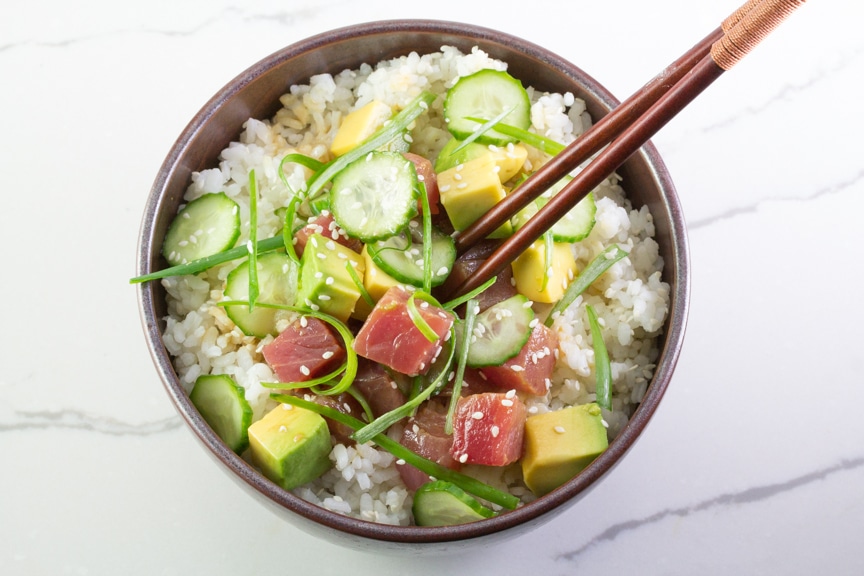
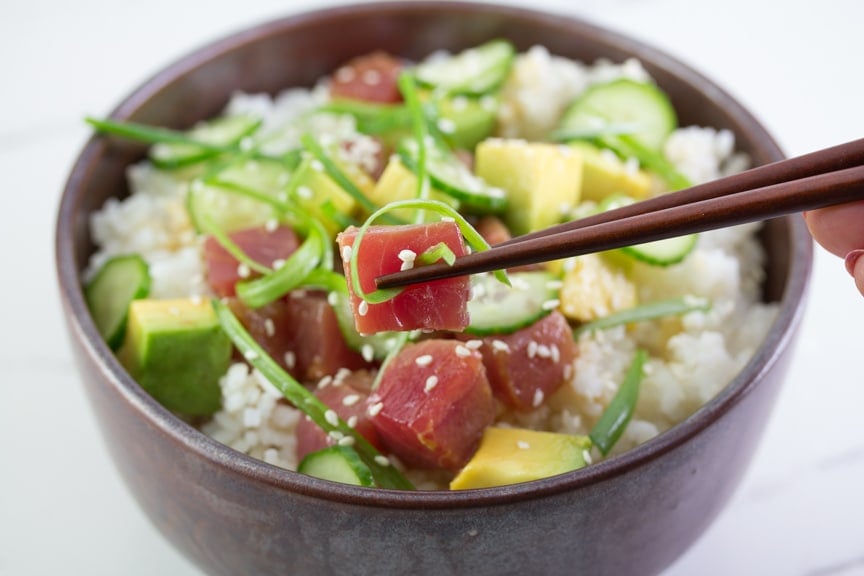
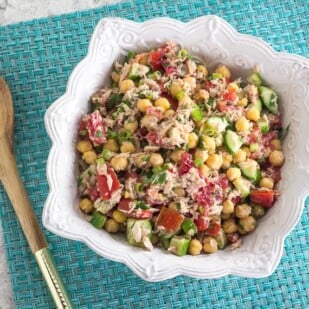
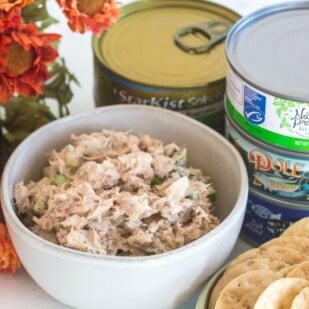
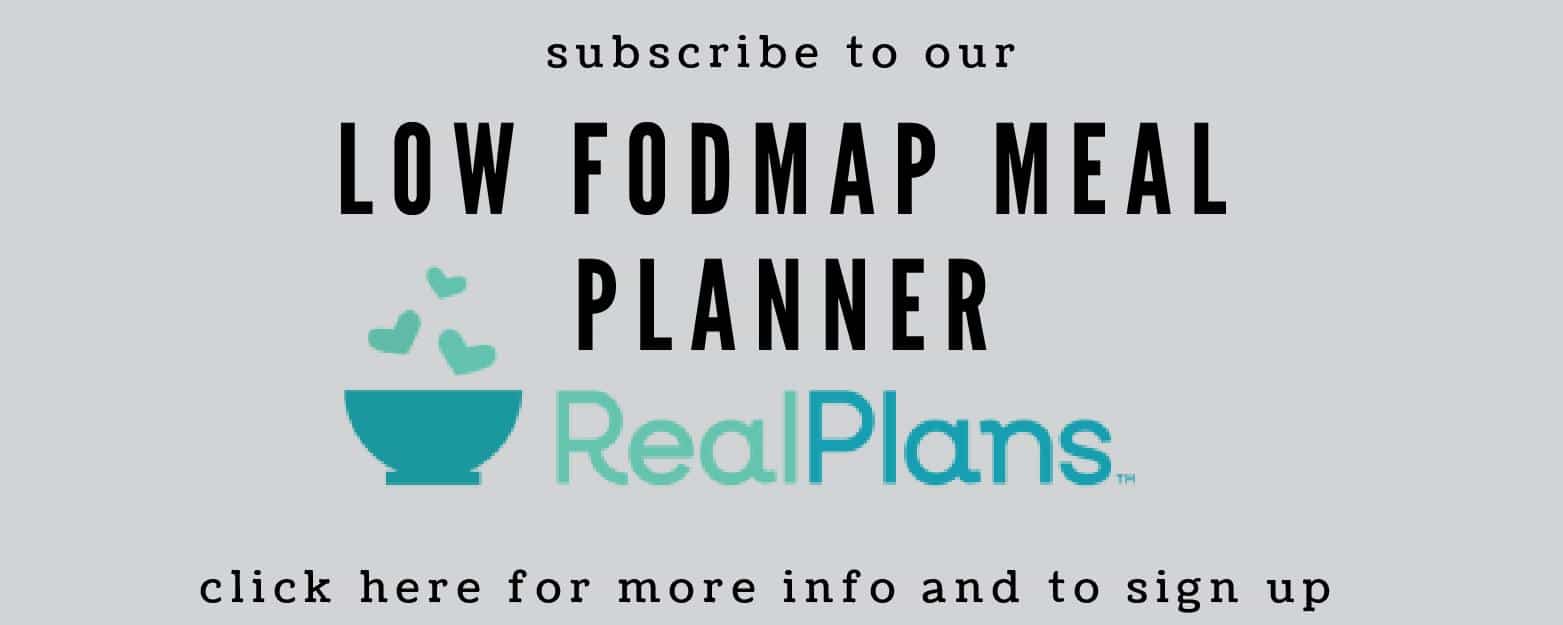


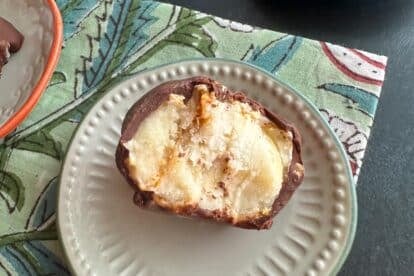

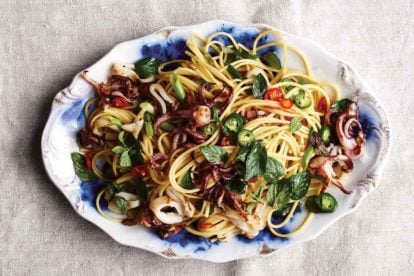
Isn’t orange juice and avocado high in FODMAPs?
Hi Mike! They have HIGH FODMAP amounts but they also both have low FODMAP amounts per lab testing by Monash. This might of interest for you – our Is Avocado Low FODMAP article. Oranges themselves have NO FODMAPs detected upon lab testing and reconstituted/fresh orange juice has a 125 ml low FODMAP designation on Monash Smartphone app.
This seems like conflicting information. Does this website get a portion of the $7.99 cost of this “Monash App?” I use Fast FODMAP, it’s free and has straight forward information that is validated by other resources I’ve come across.
Mike, we do not receive any compensation from Monash. The only two entities that are lab testing foods for FODMAPs Our Monash university and FODMAP friendly. Any information you find on the Internet is derived from one of these two sources and because it is not original could be out of date incorrect or misinterpreted. We strongly recommend that you stick with the primary sources and Monash has the great majority of raw food ingredients tested so that is why I steered you in that direction. If you meant that the information appeared conflicting because of the high and low amounts, you have to keep in mind that the FODMAP content of food is serving size related.
ADDENDUM: I have spent some time looking at the app you mention and there are many issues. It is using incredibly partial information – and unsubstantiated info as well. Even if they are using Monash as their source for some listings, Monash does not share its API so the info also cannot be up to da (I found several out of date listings). Also, for instance, if you look up AVOCADO, the Fast FODMAP app simply says that avocados are high FODMAP. This completely overlooks the fact that there are APPROVED low FODMAP servings totaling 30 g, which is a generous amount. The idea of the low FODMAP diet is to EXPAND your diet as much as possible without triggering symptoms after a structured Elimination and Challenge Phase. This is what is best for your gut. There is no need to stay away from avocado from a FODMAP perspective. Also, the app is loaded with items that HAVE NOT BEEN LAB TESTED. This would not be a recommended resource.